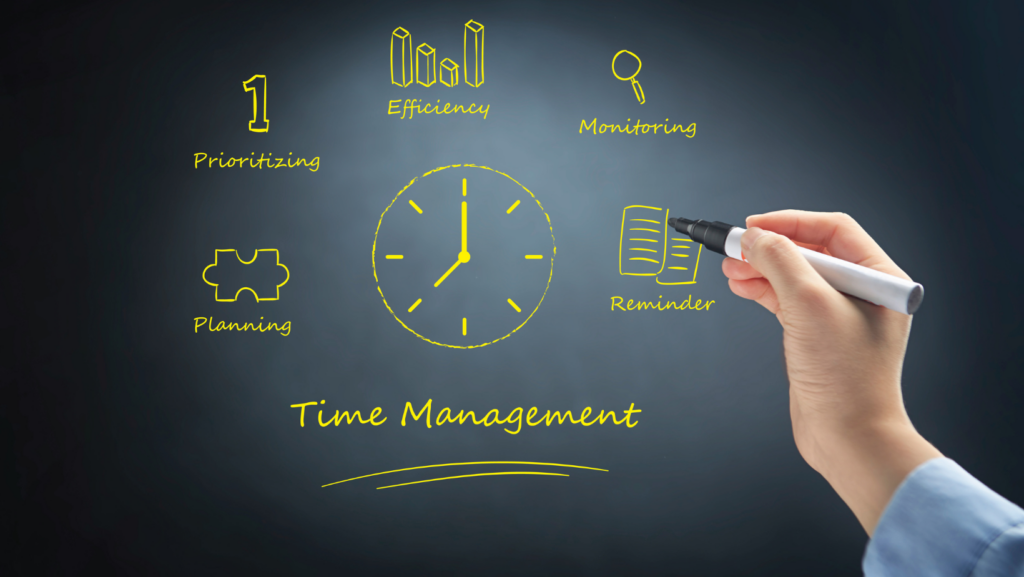In the fast-paced world of today, time management has become a skill that’s not just desirable, but essential. The Time Management Matrix, a concept that’s been around for decades, still holds its relevance in our lives. It’s a tool that can help us prioritize tasks, balance our commitments, and ultimately, lead more productive lives.
So, let’s delve into the world of the Time Management Matrix, understand its intricacies, and explore how it can transform our daily routines into a more structured, stress-free experience.
Time Management Matrix
Origins of the Time Management Matrix
 Eisenhower, a former U.S. President, originally conceptualized the Time Management Matrix; yet, it’s Stephen Covey who made it widely known with his best-selling book, “The 7 Habits of Highly Effective People”. Asserting the Matrix’s relevance, Covey stated that complete satisfaction derives from prioritizing the right activities. This assertion reinforces the Time Management Matrix as a paramount tool for achieving a balanced, fruitful life.
Eisenhower, a former U.S. President, originally conceptualized the Time Management Matrix; yet, it’s Stephen Covey who made it widely known with his best-selling book, “The 7 Habits of Highly Effective People”. Asserting the Matrix’s relevance, Covey stated that complete satisfaction derives from prioritizing the right activities. This assertion reinforces the Time Management Matrix as a paramount tool for achieving a balanced, fruitful life.
The Four Quadrants Explained
Four quadrants compose the Time Management Matrix. Each quadrants, carries a different significance.
Quadrant One: Urgent and Important Tasks
Examples here typically include crises, pressing problems, or deadline-driven projects. Individuals frequently encounter stress, burnout, and constant firefighting.
Quadrant Two: Important, Not Urgent Tasks
Tasks in this quadrant contribute greatly to long-term goals, personal mission, values, and high-impact activities. Those focusing on this quadrant find vision, balance, discipline, control, and few crises.
Quadrant Three: Urgent, Not Important Tasks
Often misconceived as important, this quadrant includes interruptions, some emails and calls, some meetings, and popular activities. People get caught in short-term focus, crisis management, reputation-chasing and shallow or broken relationships.
Quadrant Four: Not Urgent, Not Important Tasks
 Time-wasters falling into this quadrant can include trivial work, some mail, some phone calls, time-wasting activities, and pleasant activities. Spending too much time here may lead to lack of control, guilt, irresponsibility, and dependence on others for basics.
Time-wasters falling into this quadrant can include trivial work, some mail, some phone calls, time-wasting activities, and pleasant activities. Spending too much time here may lead to lack of control, guilt, irresponsibility, and dependence on others for basics.
Harnessing the potency of the Time Management Matrix requires understanding these quadrants, helping create a clear path to task prioritization and effective time management.
The Benefits of Using a Time Management Matrix
The use of a Time Management Matrix presents considerable advantages. It doesn’t merely create order in individuals’ daily tasks, but it also provides a profound change in how they perceive and tackle their responsibilities.
Prioritizing Tasks Effectively
One of the most notable perks is the task prioritization. By categorizing tasks into four quadrants — urgent and important, important but not urgent, urgent but not important, and neither urgent nor important — users develop a clearer understanding of where their attention is required most and least. For example, a project deadline due tomorrow (urgent and important) trumps responding to a casual email from a colleague (neither urgent nor important). Unfortunately, without a clear matrix to organize tasks, it’s easy to consume valuable time on less critical tasks, leaving no time for important ones. Therefore, task prioritization is a key advantage of the Time Management Matrix.
Managing Distractions and Urgencies
 Additionally, the matrix aids in managing distractions and urgency effectively. Distractions come in the form of tasks that are often tagged as urgent but aren’t truly important. A request made by a coworker, that doesn’t line up with one’s central goals or priorities, is an example of this type of task. Users of the Time Management Matrix can identify these distractions quicker, helping to maintain focus on tasks that carry more weight.
Additionally, the matrix aids in managing distractions and urgency effectively. Distractions come in the form of tasks that are often tagged as urgent but aren’t truly important. A request made by a coworker, that doesn’t line up with one’s central goals or priorities, is an example of this type of task. Users of the Time Management Matrix can identify these distractions quicker, helping to maintain focus on tasks that carry more weight.
Through the Time Management Matrix, users place their energy into tasks which yield greater productivity. By prioritizing effectively and managing both distractions and urgencies, time management not only becomes attainable but also a great deal more straightforward and efficient.
Need to Know
Mastering the Time Management Matrix isn’t just about task prioritization; it’s a journey towards personal growth and long-term success. It’s essential to avoid common pitfalls and keep a keen focus on Quadrant II tasks. With the right tools, such as Trello, Asana, or Todoist, or even traditional resources like the Bullet Journal and Freedom Planner Pro, individuals can seamlessly categorize tasks and reinforce self-accountability.



